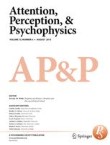
Abstract
Most studies on person perception have primarily investigated static images of faces. However, real-life person perception also involves the body and often the gait of the whole person. Whereas some studies indicated that the face dominates the representation of the whole person, others have emphasized the additional contribution of the body and gait. Here, we compared models of whole-person perception by asking whether a model that includes the body for static whole-person stimuli and also the gait for dynamic whole-person stimuli accounts better for the representation of the whole person than a model that takes into account the face alone. Participants rated the distinctiveness of static or dynamic displays of different people based on either the whole person, face, body, or gait. By fitting a linear regression model to the representation of the whole person based on the face, body, and gait, we revealed that the face and body contribute uniquely and independen tly to the representation of the static whole person, and that gait further contributes to the representation of the dynamic person. A complementary analysis examined whether these components are also valid dimensions of a whole-person representational space. This analysis further confirmed that the body in addition to the face as well as the gait are valid dimensions of the static and dynamic whole-person representations, respectively. These data clearly show that whole-person perception goes beyond the face and is significantly influenced by the body and gait.
Δεν υπάρχουν σχόλια:
Δημοσίευση σχολίου
Σημείωση: Μόνο ένα μέλος αυτού του ιστολογίου μπορεί να αναρτήσει σχόλιο.